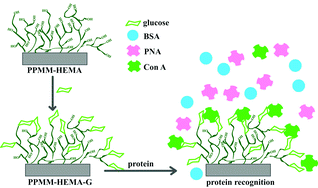Fabrication of glycosylated surfaces on microporous polypropylene membranes for protein recognition and adsorption
Abstract
Synthetic membranes with glycosylated surfaces have great potential in pharmaceutics, clinically in diagnosis and  A). When the binding degree of glucose moieties is above 0.39 µmol cm−2, the “
A). When the binding degree of glucose moieties is above 0.39 µmol cm−2, the “ A can be desorbed with
A can be desorbed with


 Please wait while we load your content...
Please wait while we load your content...